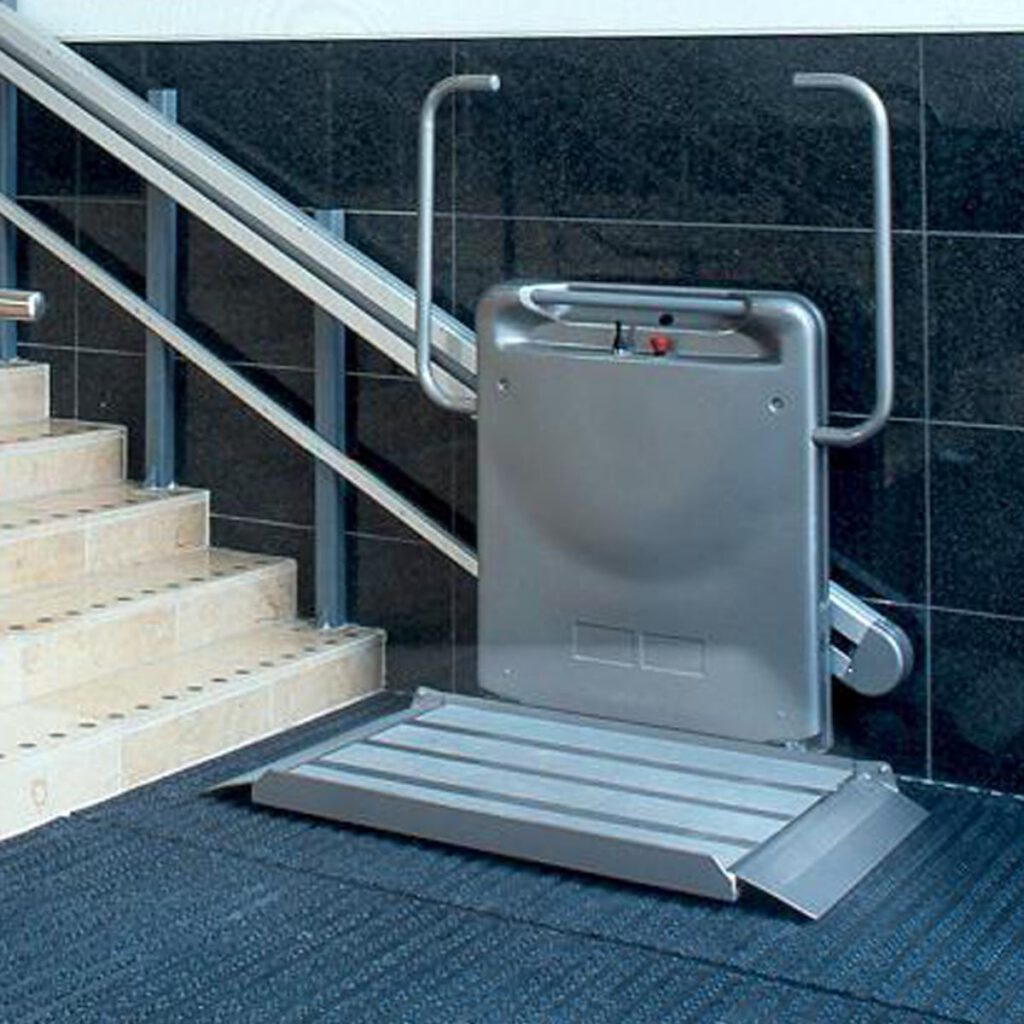
Finding the right wheelchair lift is crucial for enhancing accessibility and independence, whether it’s for a home, business, or public space. Wheelchair lifts are available in various types and configurations, so choosing the best one requires understanding your specific needs, the lift’s intended location, and its safety features. Here are some key factors to consider to ensure you choose the best Wheelchair Lift for your requirements.
1. Identify the Purpose and Location of the Wheelchair Lift
Understanding where and how the wheelchair lift will be used is the first step in the selection process. Think about whether the lift will be used indoors or outdoors, the frequency of use, and whether it’s intended for a home, office, or public building.
- Indoor vs. Outdoor Use: Outdoor wheelchair lifts need to be weatherproof and durable. They should be resistant to corrosion, moisture, and temperature changes.
- Private vs. Public Use: For residential settings, smaller lifts may be sufficient, but public areas often require higher capacity lifts that meet ADA (Americans with Disabilities Act) standards for accessibility.
2. Determine the Type of Wheelchair Lift Needed
Wheelchair lifts come in various designs, each suited for different accessibility requirements. Here are some popular types:
- Vertical Platform Lifts (VPL): Ideal for overcoming height differences, such as between floors. VPLs move vertically like an elevator and are suitable for both indoor and outdoor installations.
- Inclined Platform Lifts: These lifts are designed to travel along a staircase, providing access without needing major structural changes. They are more suitable for spaces where a vertical lift may not fit.
- Portable Wheelchair Lifts: If you need a lift that can be moved between locations, a portable wheelchair lift could be ideal. These are often used in temporary settings or for on-the-go accessibility.
Each type of lift has distinct advantages, so understanding which one fits your specific situation will help in making an informed decision.
3. Consider Weight Capacity and Lift Height
Different wheelchair lifts come with varying weight capacities and height limits. When selecting a wheelchair lift, make sure the model you choose can comfortably support the weight of the user, their wheelchair, and any other mobility aids.
- Weight Capacity: Most residential lifts support up to 750 lbs, while commercial lifts may have higher limits.
- Lift Height: Measure the height you need the lift to cover. Vertical lifts, for example, can usually accommodate heights up to 14 feet, but always check the specific range of the model.
4. Focus on Safety Features
Safety is paramount when selecting a wheelchair lift, especially for users who may have limited mobility or require additional support. Look for features like:
- Emergency Stop Button: Allows the lift to be halted immediately if needed.
- Battery Backup: Ensures the lift remains operational during a power outage, which is especially important for outdoor and public-use lifts.
- Safety Sensors and Auto-Locking Doors: Sensors can detect obstructions and prevent accidents, while auto-locking doors provide additional security when the lift is in motion.
- Smooth Start and Stop Functionality: This feature ensures a comfortable experience, preventing sudden jolts that may be uncomfortable or unsafe.
5. Examine Power Source Options
Wheelchair lifts typically run on either an AC power source or a battery-powered system. Understanding the power needs of each type will help you decide which is the most practical.
- AC-Powered Lifts: These require a dedicated electrical connection, which may mean additional installation costs but provides a stable power source.
- Battery-Operated Lifts: These can be more convenient in certain settings, especially where power outlets are scarce. They also provide uninterrupted function during a power outage, offering added reliability.
6. Evaluate Installation and Maintenance Requirements
The complexity of installation and the level of maintenance required can vary significantly between different wheelchair lifts. Be sure to ask about these aspects when choosing a model.
- Professional Installation: Certain lifts, like inclined platform lifts, often need professional installation to ensure safety and functionality.
- Maintenance Needs: Look for models with low-maintenance designs, such as those with corrosion-resistant materials for outdoor lifts. Regular inspection and servicing are essential, so check if the manufacturer offers maintenance plans or warranties.
7. Set a Budget and Consider Financing Options
Wheelchair lifts are an investment, and their prices can vary widely depending on the type, size, and additional features. It’s essential to establish a budget early in the process.
- Initial Cost vs. Long-Term Investment: While higher-end lifts may have a steeper upfront cost, they often offer better durability and lower maintenance, potentially saving money in the long run.
- Financing Options: Some suppliers provide financing plans, allowing you to spread the cost over time, which can make it easier to afford a high-quality, durable lift.
8. Verify Compliance with Local Accessibility Regulations
Ensure that the wheelchair lift you select meets local regulations and standards, especially for public buildings. Many areas have strict guidelines around accessibility, and installing a non-compliant lift can lead to fines and legal issues.
- ADA Compliance: For public spaces in the U.S., ensure the lift meets ADA standards. This includes sufficient weight capacity, accessibility features, and safety standards.
- Local Building Codes: Check with local authorities or the lift provider to verify that the lift adheres to specific local building codes or zoning laws.
9. Look for a Reliable Supplier
Choosing a reputable supplier can make a significant difference in your experience with the lift. A reliable provider will offer quality equipment, professional installation, and ongoing customer support.
- Product Range: Select a supplier who offers a variety of wheelchair lifts, allowing you to find the ideal fit for your needs.
- Customer Support: Good customer support, especially regarding installation and maintenance, can help ensure the lift functions smoothly and reliably.
- Warranty and Return Policy: Check for warranties and clear return policies, as these are indicators of a reliable supplier.
Conclusion
Choosing the right Wheelchair Lift requires careful consideration of your needs, the lift’s intended use, and essential features such as safety, reliability, and compliance with accessibility standards. By keeping these factors in mind, you can select a wheelchair lift that provides safe and convenient access while enhancing independence.
For a reliable selection of high-quality wheelchair lifts, explore our product range at JNHCLift, where you can find models tailored to both residential and commercial needs.



